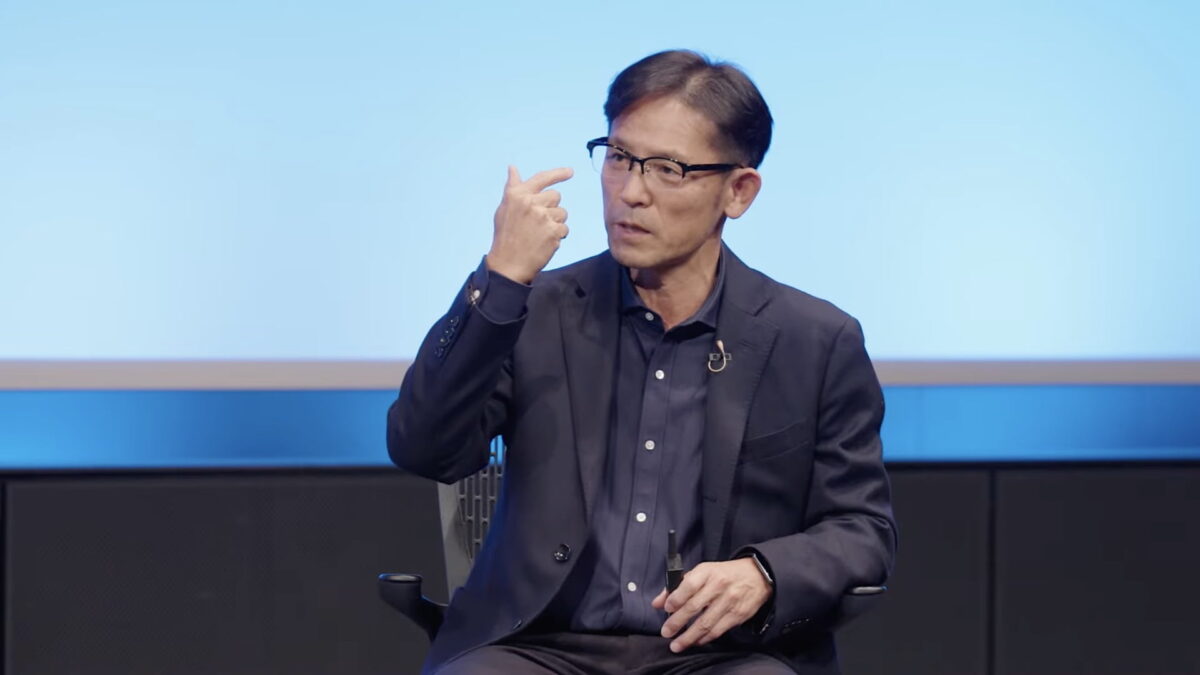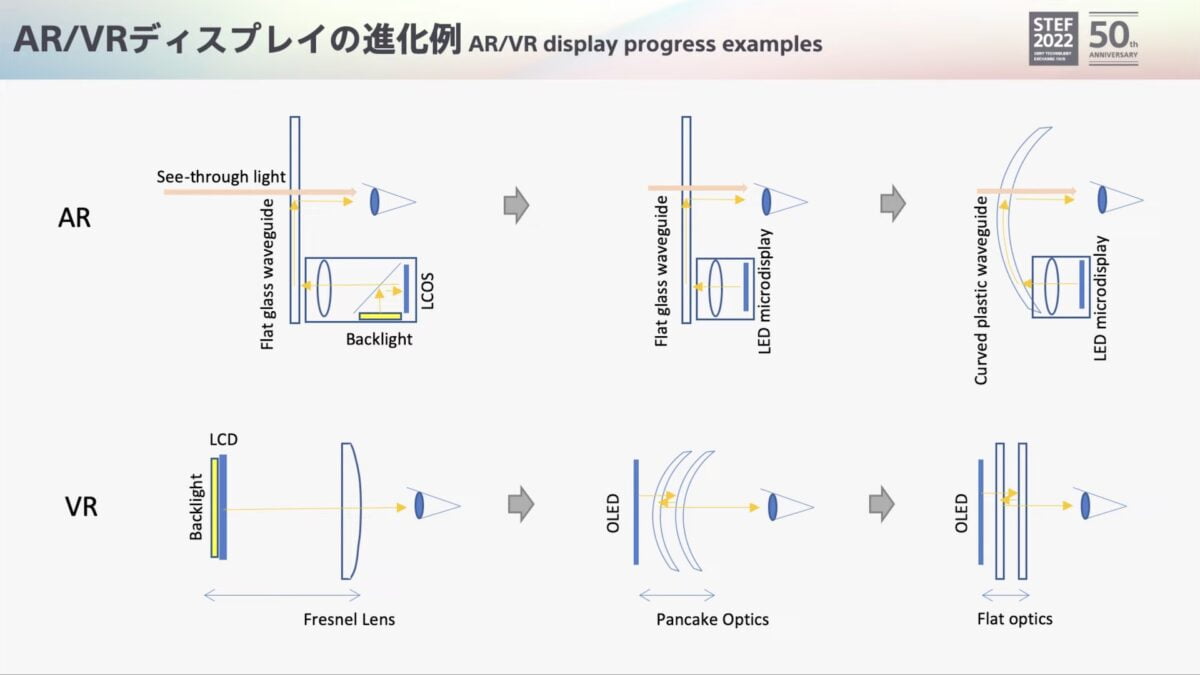Sony previews next-gen displays for VR and AR

At a technology conference, Sony's senior AR researcher made predictions about the development of VR and AR displays.
The Sony Technology Exchange Fair (STEF) opened yesterday. The annual conference brings together Sony's divisions and researchers to showcase new technologies and share ideas. Parts of the event are open to the public for the first time this year.
As part of STEF 2022, Sony held a panel discussion on 3D technology. One of the guests is Hiroshi Mukawa, who has been working on AR technologies for Sony for 20 years. He is referred to as "Mr. AR" by the moderator.
Mukawa led the development of Sony's first real AR headset, which underwent test runs involving the public a few years ago along with a Ghostbusters experience. The researcher detailed the far-advanced technology in April 2020.
Display basics for slim AR headsets
Mukawa first gives an outline of the major products and prototypes Sony has developed in VR and AR since 1996, and then moves on to discuss technologies the future holds. His focus is on display systems. These could develop as follows, according to Mukawa.
In AR, he sees two major developments coming to the industry: MicroLED displays and new waveguides that are made of plastic instead of glass and have a curved shape instead of a flat one. They should enable a more natural look similar to sunglasses.
MicroLEDs are considered a key AR technology because they enable compact, low-power, high-luminance AR displays without backlighting. The problem is that MicroLEDs are not yet fully developed and are heavy and expensive to manufacture.
Sony's AR headset already used MicroLEDs, but broad commercialization of such displays is not expected until the second half of the decade.
VR displays will be smaller, have higher contrast, more natural
Other display systems are being used in the VR sector. Here, Mukawa speculates on OLED microdisplays and liquid crystal lenses. The first could begin to displace today's standard LC displays as early as the next two to three years, enabling mixed reality headsets with slimmer designs and extremely high contrast.
The implementation of liquid crystal lenses, which will also help reduce the form factor and could allow natural focusing in VR for the first time, will probably take longer.

The prototype of the Holocake 2 shows the direction in which the form factor of VR headsets could develop. However, it does not use liquid crystal lenses and lasers instead of OLED microdisplays as a light source.. | Image: Meta
Meta's Half-Dome 3 headset prototype uses liquid crystal lenses for exactly this purpose. With the Mirror-Lake concept, Meta is pursuing a headset design that should one day have such lenses built in.
According to Meta, broad availability of this technology is not expected before the second half of the decade. Sony's own Playstation VR 2 relies on a combination of specially manufactured Fresnel lenses and an OLED display.
Note: Links to online stores in articles can be so-called affiliate links. If you buy through this link, MIXED receives a commission from the provider. For you the price does not change.
